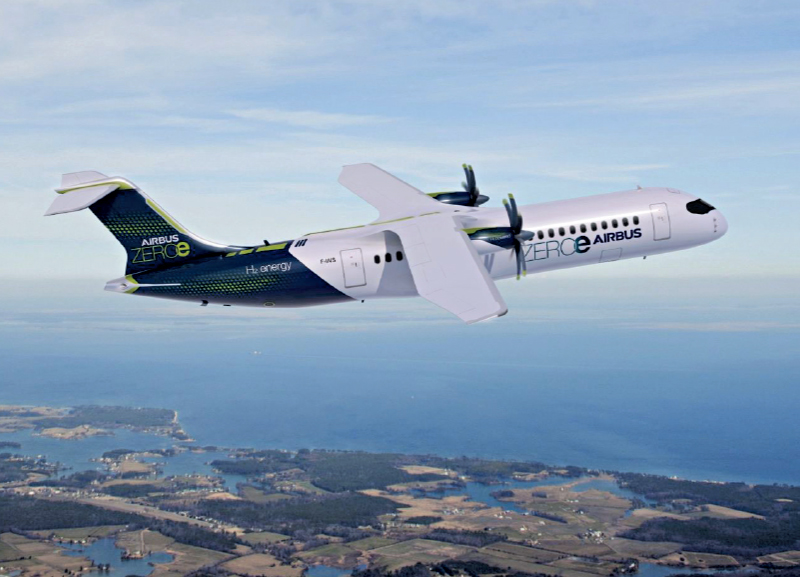

Arnav Khandelwal, Class 8, Alwar Public School, Alwar, Rajasthan

Have you ever wondered about the future of aviation? We already have a glimpse of it as last month Airbus’ CEO said that the company plans to launch the ZEROe programme by the end of the decade, with an entry into service target by 2035. Now let’s first understand what it is about.
This programme was launched to reduce carbon emissions as the aviation industry is responsible for 2 to 3% of global emissions. So, to solve this problem, Airbus decided to launch this programme to make the world’s first hydrogen-powered commercial jet.
This type of aircraft engine only produces water vapour as a by-product thus not harming the environment or causing global warming. To make this kind of aircraft, Airbus is currently working on developing hydrogen-fuel cells that will work as efficiently as possible.
Other than this, currently Airbus is developing another system as well. They have already designed a few concept aircraft, which have one of the most advanced engines. It is the blended-wing body. This aircraft will change the way we travel, with an impressive range of 2,000 nautical miles and a capacity of 200 passengers. This aircraft has impressive efficiency as its body is blended with wings, which makes its aerodynamics impressive.
A few months ago, Airbus powered the first engine fuel cell, making a great milestone in achieving the ZEROe project. There will be two types of propulsion—either via hybrid hydrogen-electric fuel cells or direct hydrogen combustion.
Another concept aircraft is the A-380 ZEROe with hydrogen combustion cells. After achieving these milestones, Airbus has also planned to make complete electric aircraft. They decided to use this aircraft as it is really big, thus making it easy to install new systems. The hydrogen fuel cells create electrical energy that powers the motors, which is different from the propulsion systems currently used on aircraft. The hydrogen fuel cell propulsion system, called the ‘iron pod’, also contains units that control and keep the motors cool.
In late 2023, the iron pod reached 1.2 megawatts of power, which is the power Airbus plans to test on the A380 in 2026. I hope that this may have given you some glimpses of future aviation.
Draw a concept aircraft that uses solar energy to power itself.





